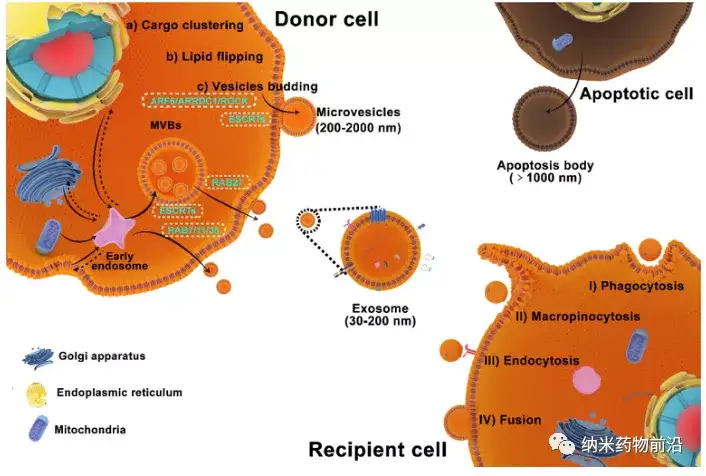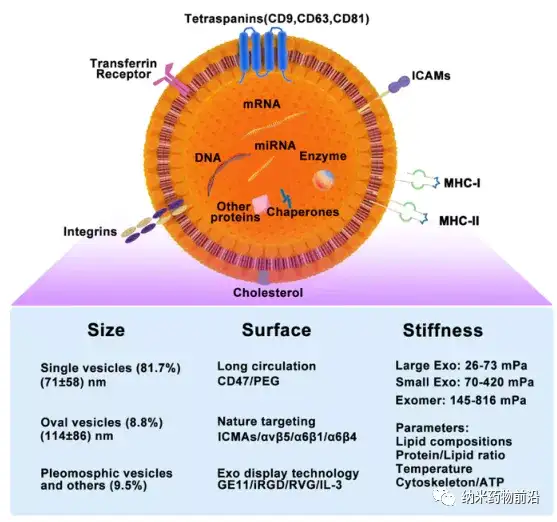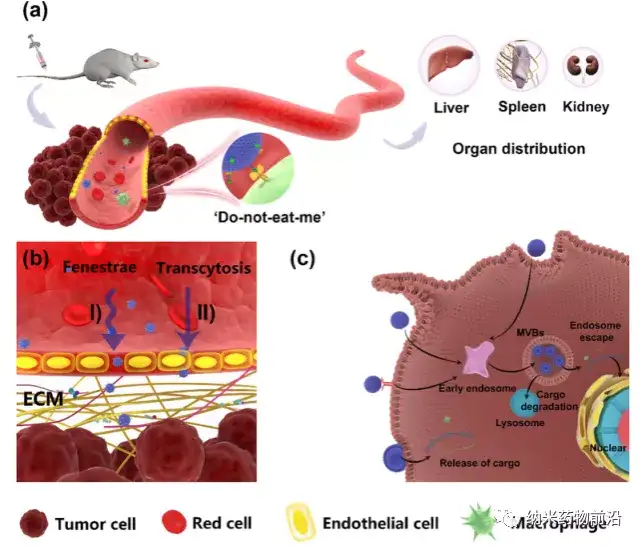【Review】Professor Tao Zhimin and Xu Wenrong of Jiangsu University ADDR: Extracellular vesicles as a nano/micro-scale delivery system
QQ Academic Group: 1092348845
Detailed
Extracellular vesicles EV, as nano/micron-sized carriers, have shown great promise in drug delivery and bioimaging. At present, a large amount of research work has explored the unique properties of EVs. Their physicochemical properties, biological characteristics and mechanical properties make them unique carriers and have special pharmacokinetics and circulation in drug delivery. Metabolism and biodistribution patterns. This article first analyzes the pros and cons of EV as a delivery platform. Second, compared with engineered nanoparticle delivery systems such as biocompatible diblock copolymers, a reasonable design scheme for engineered EVs especially exosomes is proposed. Finally, it compares different drug loading strategies for EVs, and provides a reference for how to construct clinically available and efficient nano/microcarriers to achieve satisfactory medical goals.

Figure 1 Biological origin and cellular uptake of extracellular vesicles

A summary of the schematic diagram showing the principle of measuring the mechanical properties of EVs with atomic force microscopy AFM and the atomic force microscope images of red blood cell EVs. The expression of aquaporin-1 AQP1 on EVs can increase its deformability, and the stiffness of AQP1-deficient EVs is significantly higher than that of control EVs. In addition, ultracentrifugation and ultrasonic treatment of the EV can change its rigidity to a certain extent. Surface modification for example, functionalization with polymers or lipids will also change the mechanical properties of EVs. Similar to synthetic particles, changing the polymer type, length, density/coverage or changing the composition/phase behavior of phospholipids will change one. A series of physical and chemical characteristics determined by mechanical properties, including particle size, shape, chemical composition and surface ligands, thereby changing the delivery efficiency of EVs.

references
[1] P. Fu, J. Zhang, H. Li, M. Mak, W. Xu, Z. Tao, Extracellular vesicles as delivery systems at nano-/micro-scale, Adv Drug Deliv Rev, (2021) 113910.
This information is sourced from the Internet for academic exchanges. If there is any infringement, please contact us to delete it immediately
- Previous: ACS: Ultra-thin MXenep
- Next: A Rising 2D Star: Nove


 Academic Frontier
Academic Frontier